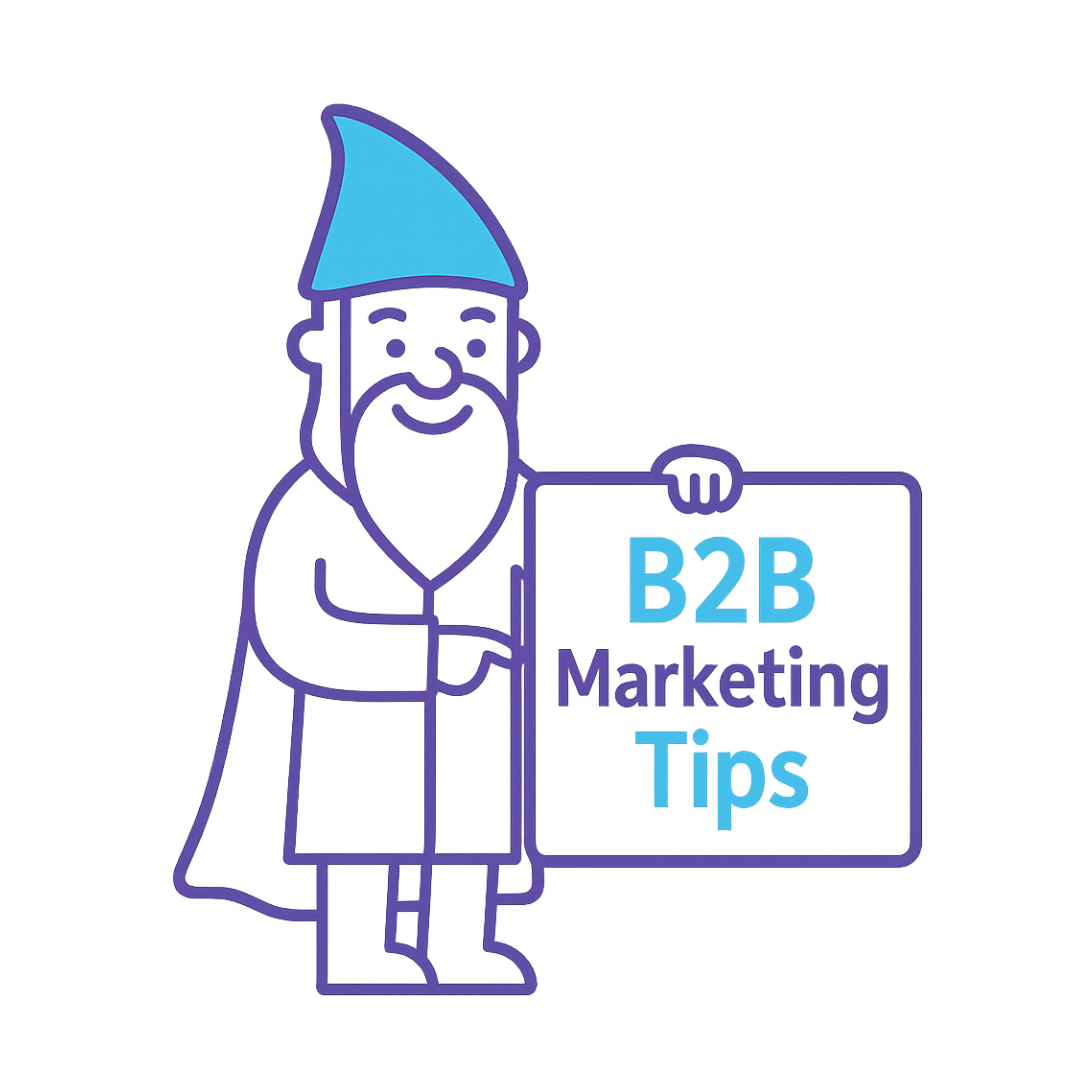00:00 Presentation of Cathy’s buyer journey
16:42 Many players are involved
22:22 Your perception of the customer journey is partial
24:00 Your prospect will educate himself in one way or another
25:12 Recognizing and managing the buying group (bis)
26:02 Recognizing and managing your brand ambassadors
27:39 Securing the end of the journey
In B2B, a precise understanding of the customer journey is crucial to effective lead management. Errors in lead management can often be attributed to a misinterpretation of customers’ needs and behaviors throughout their buying journey.
This article, based on a Marketo Office Hour session, explores a real-life B2B customer journey and reveals essential strategies and adjustments to improve lead management.
I drew on this Miro for this Marketo Office Hour.
Summary
- Part One: Analysis of the B2B Customer Journey
- Part Two: Six Lessons from the B2B Customer Journey
- Diversity of players
- Different needs
- Enriching leads from the outset
- Impact on Lead Management reporting and frequent error
- Your perception of the actual B2B customer journey is biased at best
- Connect all your systems to Marketo
- Be careful
- Importance of prospect education
- Exclusive content
- Tailored nurturing
- Buying Group Management
- Manage Buying Groups
- Help with Lead Management reporting
- Correcting acquisition tracking errors
- Role of Brand Ambassadors
- Recognizing and valuing your Ambassadors
- A dedicated communication channel
- Follow-up After Decision
- Do not relax vigilance
- Implement a feedback loop of the actual amount paid in fine in the CRM
- Diversity of players
Part One: Analysis of the B2B Customer Journey
The journey of Cathy, an employee of a French subsidiary of an American company, illustrates the challenges and opportunities of lead management through four main phases. Just like a knight in Camelot, she embarks in a quest to find her Holy Grail.
Discovery phase
In this phase, Cathy discovers the object of her quest, which imposes itself on her.
Cathy, a new hire, is quickly confronted with the need for in-depth training on Marketo. Her supervisor, Peter, who was initially in charge of training her, is swamped with preparations for a major event and asks Cathy to find a local solution.
At the same time, Cathy has to run her first email campaign in Marketo. She realizes that it’s a powerful tool requiring structured training.
She decides to opt for “structured” training, not the quick, free training you can find online.
- the transition from “I don’t have a problem” to “I need to fix this problem” is not fluid and progressive. It’s often triggered by an external event that pushes us to quickly solve the problem (in this case, hiring and the manager’s lack of availability)
- the only content Cathy can be sensitive to at this stage – and before – is branded content, playing on emotion. Much more common in B2C than B2B.
Consideration phase
This is the phase where you gather clues and understands how to solve the quest.
Cathy will quite naturally turn to her favorite search engine or AI assistant to tell her how to train on Marketo. Cathy actively explores the training options available, particularly those in French.
She consults articles and online resources, notably on the Merlin/Leonard website, to learn about Marketo training. This phase shows the importance of a rich, educational online presence in capturing prospects’ attention.
Cathy discovers two particularly useful articles: “How to get trained and learn all about Marketo” and “Practicing Marketo without training: the 10 layman’s mistakes”. These articles reinforce her feeling that Merlin/Leonard is a reliable and expert source in the field. However, she’s not yet ready to leave her email address to get more content.
She will also consult the Adobe site and competitors’ sites.
At the same time, Cathy remembers a university friend, Lucy, who also works with Marketo at another French company. After a chat, Lucy highly recommends Merlin/Leonard’s training courses, especially for the free one-hour support every Friday.
Following a retargeting advert on Facebook, she takes part in an online quiz on the Merlin/Leonard website to assess her level on Marketo. The quiz, designed to provide added value, recommends a full training course to Cathy and asks her to leave her email address to obtain the results.
For the first time, Cathy becomes a known contact in Merlin/Leonard’s Marketo system.
- Need to make relevant content, freely available, well-referenced
- At the start of this phase, Lucie isn’t looking for information on specific training courses but on “how to train”: my content shouldn’t talk about my training courses but about training opportunities in general
- Whether it’s on my site or that of competitors, Cathy will be looking for information. Might as well be on my site 😀
- Influence of personal recommendations and interpersonal relationships.
Decision phase
This is the final phase, with the trials and tribulations leading up to the Grail.
Cathy decides to follow her friend’s recommendation and wants to sign up for a training course offered by Merlin/Leonard.
She then discusses the various training options (online, stand-alone or with a dedicated trainer) with her supervisor, Peter. Peter decides to consult Cathy’s colleague, Paul, to see if he too is interested in training.
Peter anonymously visits the Merlin/Leonard website to check the company’s credibility and consult training reviews. He authenticates himself by watching a long video on creating marketing dashboards.
As for Paul, he expresses his interest in the training, which leads to the decision to train two people. He too will take the quiz Cathy took, and become visible to Merlin/Leonard.
The phase ends with a conference call initiated by Cathy with Peter, her manager, and Thomas from Human Resources. Thomas is not someone who needs convincing, but rather has the power to block the situation if he doesn’t find what he’s looking for: the fact that Merlin/Leonard is Qualiopi certified. He’ll browse the site and find a dedicated page on the subject.
The conference call ends with the decision to train two people by video with a certified trainer.
- Arrival of players with the power to say “No”.
- Importance of credibility and online opinions for decision-making.
Purchasing Process Phase and HR
It’s a hidden phase, where Cathy can lose everything after finding her Grail.
The purchasing and HR process phase is often complex, particularly in France where specific financing mechanisms are in place. Cathy organized a meeting between Merlin/Leonard, the HR department and Peter to discuss training funding possibilities.
In France, part of the training costs can be financed by government-backed organizations. Thomas, from the HR department, has to check that Merlin/Leonard is Qualiopi certified, a prerequisite for funding. After confirming this certification on the Merlin/Leonard website, he prepares the funding application.
The funding body (OPCO) that will receive the application can also derail the sale by deciding not to fund the training.
Francis from the Purchasing department is also involved, as he will have to create a new supplier in the database. He also has the power to say “No” if, for example, it has been decided that the number of suppliers is now limited.
This is the phase of all dangers just when you thought victory was assured. It’s important not to slacken your efforts in this phase, and that the sales person sees it through to the end.
- Complexity of post-purchase mechanisms, particularly in key accounts.
- Importance for the salesperson to remain vigilant until the end.
- The decisive role of certifications in facilitating internal approvals.
Part Two: Six Lessons from the B2B Customer Journey
Diversity of players:
Different needs
Each player in the customer journey has unique needs requiring personalized responses. Cathy, Peter, Paul, Thomas and Francis each have specific expectations linked to their respective roles. It’s crucial to recognize these differences and adapt communications and offers accordingly.
For example, it would be counter-productive to prepare a “Nurturing” scenario around training and send it to the 5 people above. It would even have negative consequences for Thomas and Francis.
Enriching leads from the outset
As a result automatically enrich people’s profiles as soon as they enter the database to identify that Thomas is in Human Resources and Francis is in Purchasing is crucial to avoid blunders.
Impact on Lead Management reporting and frequent error
Finally, it’s interesting to note that 1 need generated the basic creation of 5 people. And that an opportunity was won.
In your opinion, what is the correct view of the transformation rate? 20% meaning 5 leads have generated a won opportunity? Or 100%, because 1 lead generated an opportunity?
It’s more the first option that’s measured in companies, whereas it’s the second option that’s correct in my opinion, we’ll come back to this in a future MOH.
Your perception of the actual B2B customer journey is biased at best:
Connect all your systems to Marketo
Gradually, certain interactions are becoming more and more complicated to capture: opening and clicking emails or visiting pages on the website. As the need to protect privacy grows, the scope for marketing to listen is shrinking.
In this context, it’s important to interconnect all the solutions that offer customer experiences to your visitors. I often see :
- professional videos on Youtube
- quizzes in google forms
- pdf directly integrated on sites
- webinars not connected to Marketo
- stand-alone chatbots
- sales CRMs not integrated with Marketing Automation (heresy!!)
So many experiences that marketing won’t be able to “listen to” and therefore be less relevant for sending personalized content.
Be cautious
Nevertheless, reading the Miro, it’s easy to see that the number of blue interactions (invisible to Merlin/Leonard) exceeds the number of purple interactions (visible to M/L). We can only see a tiny part of reality.
Let’s be extremely cautious about systematically triggering the sending of emails following an interaction, as you can quite easily break the customer experience.
Importance of prospect education:
Exclusive content
Providing quality educational content early in the B2B customer journey is essential to building trust and informing prospects. It’s the foundation.
Now you’re going to have to produce exclusive content, i.e. content that only you can produce. What’s in it for you? In the very near future, visitors will educate themselves directly in AI assistants and search engines, no longer directly on your site.
The only way to keep them coming is to offer content that only you can produce.
The latest trends show that 80% of your content should be open access, and 20% reserved for those who agree to subscribe to your brand.
Tailored nurturing
In Cathy’s case, it’s relevant to offer her an education feed on Marketo training (which I didn’t do above – I still have room for improvement 😂). The last contents of the nurturing feed can be precisely for human resources and purchasing, with all the documents they’re going to need at some point.
This can reinforce credibility with these two players by showing that Merlin/Leonard is used to working with key accounts and has already prepared everything.
Buying Group Management:
Managing Buying Groups
Understanding and managing buying groups within organizations is crucial to effective lead management. B2B purchasing decisions often involve several stakeholders with different roles and needs. It is essential to identify these groups and tailor communications and offers to each member of the group.
Today, because of the technologies in place, we manage :
- physical persons (Leads or Contacts in CRM)
- Corporate entities (Accounts in CRM)
The notion of buying group exists late in the funnel, when the opportunity is created, because we can add people to it. But it’s declarative, at the initiative of sales people. I have to say that I’ve never seen a CRM filled out properly on this subject. Sales doesn’t see any point in it, and marketing doesn’t have a hand in it.
However, you can automate this buying group constitution from the outset if :
- several people from the same company interacting with your brand are detected
- within the same timeframe (e.g. less than 30 days apart)
- on the same subject (in this case, training courses)
We can legitimately deduce that these people are linked to the same need. We’ll see in a future MOH how to automate this buying group.
Help with Lead Management reporting
Using buying groups instead of people to measure conversion rates solves the problem encountered above: a buying group, around a need, has generated a won opportunity, so we do indeed have a 100% conversion rate.
Correcting acquisition tracking errors
The first interaction that will identify Cathy and Paul is the Quiz. For Peter it’s the video, for Francis and Thomas it’s the appointment booking solution. If I do a classic first-touch revenue attribution with these elements, I’ll attribute the earned opportunity revenue this way:
- 2/5th to Quiz
- 1/5th to the Video
- 2/5th to the appointment solution
And when someone asks me “Which sources generate the most revenue?”, I’m going to give these figures. Unfortunately, that’s not true.
100% has to go to Quiz because the other touches are direct consequences of Cathy’s need for training. They are interactions within the journeys but not at the origin of the journey. This is why we need to correct the acquisition sources of Paul, Francis, Peter and Thomas to assign Cathy’s source to them. We’ll develop this notion in a future MOH.
Role of Brand Ambassadors:
Recognizing and valuing your Ambassadors
Recommendations from trusted people, like Lucy’s to Cathy, can greatly influence prospects’ decisions. It’s important to cultivate and recognize brand ambassadors, as they play a crucial role in acquiring new customers.
Recognizing them in CRM and marketing automation can, for example, send alerts to sales reps when an ambassador interacts, and offer him or her a personalized experience. Marketing automation can also personalize communications to show that the ambassador is “recognized” as such.
The classic trap: when the ambassador changes company, lose all their information as you recreate a contact in the CRM 😭. This is how most companies work, which makes tracking ambassadors complicated.
A dedicated communication channel
Finally manage a private communication group, with your ambassadors (on a private social network, like Whatsapp, Signal, Slack or Discord for example) allows you to value them and create a very useful community for feedback.
Follow-up After Decision:
Don’t let your guard down
I’ve seen lots of “won” opportunities never come to fruition because of stakeholders who weren’t involved until the post-signing phase.
The post-decision stages are critical and require rigorous follow-up to avoid derailments. Even after the initial decision to form, obstacles can arise, such as discussions about funding and internal approval. Careful monitoring and good communication with all stakeholders are essential to ensure success.
Set up a feedback loop of the actual amount paid in fine in CRM
Another classic bias is the salesperson’s poor estimate of sales potential when creating the opportunity. As sales reps’ bonuses are sometimes based on the amounts earned from opportunities, this encourages “optimism”.
However, the reality can sometimes be totally different from what was forecast (sometimes up to a 20% error). And it’s the final amount paid that counts.
In my CRM, I have feedback on paid invoices that go back up the chain to projects and missions, and from there to opportunities. This automation then corrects the wrong amounts for opportunities and, behind this, the attribution of income to marketing campaigns. This is the only way to ensure that marketing decisions are made on the right basis.
Conclusion
The example of Cathy’s journey offers valuable insight into each phase of the B2B customer journey, showing opportunities to refine lead management. Companies that take a proactive, well-thought-out approach to lead management can better anticipate customer needs, improve the customer experience and maximize ROI.









